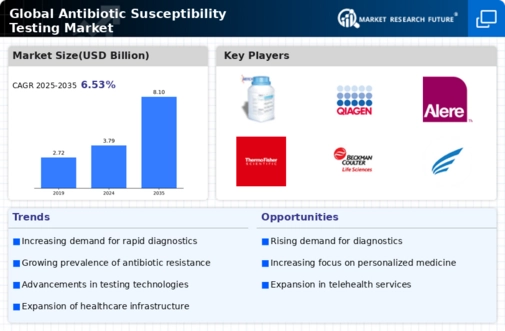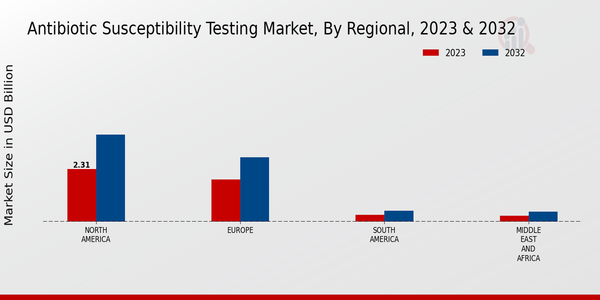Major players in the antibiotic susceptibility testing market are constantly striving to gain a competitive edge by introducing new products and technologies. For instance, in March 2023, bioMérieux launched the VITEK MS PRIME, a new mass spectrometry-based identification system for rapid and accurate identification of microorganisms, including antibiotic-resistant bacteria. This launch is expected to strengthen bioMérieux's position in the market and drive growth for the company.
Leading antibiotic susceptibility testing market players are also focusing on strategic partnerships and acquisitions to expand their product portfolios and geographic reach. In January 2023, Thermo Fisher Scientific acquired Mesa Biotech, a leading provider of antimicrobial susceptibility testing solutions. This acquisition is expected to enhance Thermo Fisher's capabilities in the antibiotic susceptibility testing market and provide customers with a comprehensive range of solutions.
bioMérieux is a global leader in the field of in vitro diagnostics, with a strong focus on the development and manufacturing of antibiotic susceptibility testing solutions. The company's VITEK 2 and VITEK MS systems are widely used in clinical laboratories around the world for the rapid and accurate identification and susceptibility testing of bacteria and fungi. bioMérieux is committed to innovation and has a strong pipeline of new products and technologies in development. The company's strong brand recognition, global presence, and commitment to quality make it a formidable competitor in the Antibiotic Susceptibility Testing Market.
BD (Becton, Dickinson and Company) is another major player in the Antibiotic Susceptibility Testing Market. The company offers a comprehensive range of solutions for antibiotic susceptibility testing, including the BD Phoenix and BD Phoenix M50 systems. BD is known for its high-quality products and strong customer support. The company has a global presence and is well-positioned to meet the needs of customers in both developed and emerging markets. BD's focus on innovation and commitment to providing comprehensive solutions make it a strong competitor in the Antibiotic Susceptibility Testing Market.











